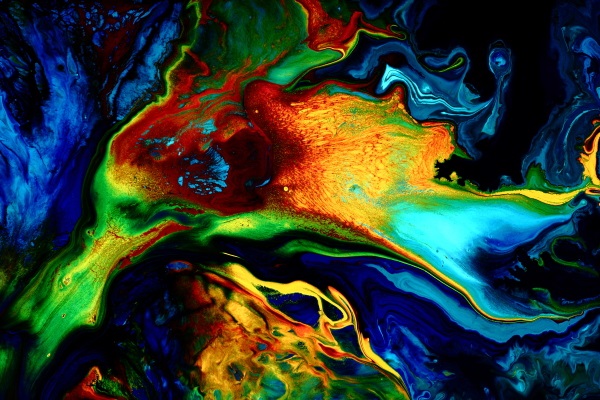
Two years ago, Sergiusz Wiaderny applied to be in the Artists Marketplace at the Utah Arts Festival and was rejected.
This year, when the Salt Lake City photographer artist (Booth 55) – who works full time at his business Pumpco (small aggregate concrete pump business) – was accepted, he says in an interview with The Utah Review that he is glad that he wasn’t accepted earlier. “I needed the time to improve my skills,” he adds, explaining that he had only started his art seriously six years ago. “I was coming back from skiing with my daughter and I looked at the snow and the rock formations in Little Cottonwood Canyon, and the image struck me. I had no clue about what I would need to do as an artist with photography,” he says.
In that short time however, Wiaderny, who was born in Poland in the 1960s, has emerged as a unique abstract artist incorporating a developmental and finishing process that truly cannot be replicated in the way he captures images to represent abstract interpretations of the most intricate, exquisite details of nature and the surrounding environment. This is not only his first Utah Arts Festival but this is the first art festival of any kind in which he is participating.

Working with a Canon EOS Mark ll 5D camera and various paints, Wiaderny is continuously perfecting a technique that is inspired, in part, by the admiration he has for the work of Bill Atkinson, a former computer engineer who worked for Apple during the late 1970s and throughout the 1980s developing some of the earliest generation digital tools for creative output including QuickDraw, MacPaint and HyperCard software. Atkinson has become well-known for his nature photography and Wiaderny was drawn especially to his book ‘Within The Stone,’ which features images of cut and polished stone and rock that look like abstract art works. Similarly, Wiaderny has studied extensively the work and technique of Bryan Peterson, whose books on technique and skills building in photography are considered essential standards.
Wiaderny, who works on his art at his home studio on evenings, weekends, and during the winter when his daytime business is at its lull, focuses intensely on making artistic prints of what he would consider as satisfying enough to be of top quality. He applies specifically calibrated amounts of color paint, either in liquids or on a flat, wet surface. He then relies on natural physical properties to work their magic, moving the paints around for a few seconds. Meanwhile, Wiaderny is focused on targeting the correct amount of exposure time. During the ensuing process, Wiaderny snaps hundreds of images – 300, for example – over several hours, such as four and a half hours. He’ll only keep a fraction of the images he snaps and store them in his computer. He uses Digital Photo Professional where all the images are separated and are guaranteed to have the sharpest and purest effects in their final form. “Sometimes, I might only have one or two usable pictures from an entire day of work,” he explains, adding that sometimes he retrieves images from the “trash” because he now sees something unique that he did not spot the first time.

For his prints, Wiaderny constructs a wooden frame and stretches Brilliance Chromata White canvas steadily over the rectangular contours which will define the final piece. Thus, his finished work ends up being a true painting and he mitigates completely any glare effect that might distract from the purity of the final work. The final print is generated in large format on a Canon IPF 8100 Printer, which Wiaderny believes has the ideal color-pigment ink system to meet the widest possible spectrum of color needs in his work. Afterward, he uses a Glamour 2 varnish as a protective coating to elucidate the colors and their depths. As expected, all of his prints are in limited edition.

